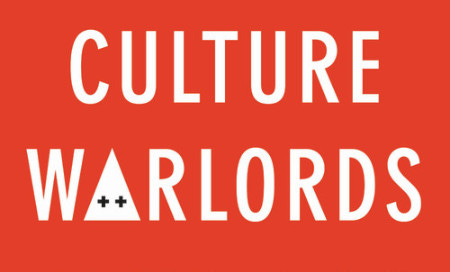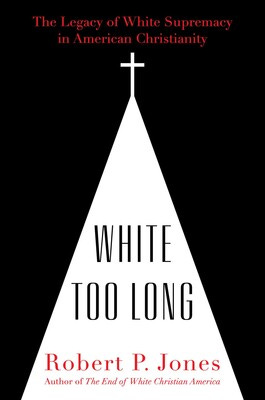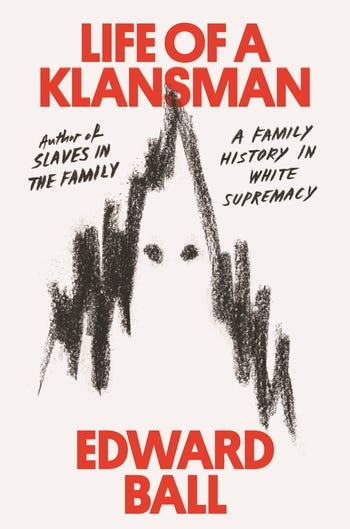Book Recommendations for Tackling American Hate
Books that address the issues of white supremacy, conspiracy theories, and the alt-right
In the past few months there has been heightened discussion in the United States about the far-right and misinformation. As the following books show, white supremacy, conspiracy theories, and the alt-right are not new phenomena for this country. Instead, they are woven into its foundations. Each of the following books explores a different element in the world of the far-right and the history of white supremacy. Some attempt to offer solutions, others simply state the facts. I’ve ordered them roughly in reverse chronological order. Every one of these are difficult books and it is because of this that they are important to consider.
Culture Warlords - Talia Lavin (non-fiction/quasi-memoir, 288 pages)
Talia Lavin’s Culture Warlords focuses on the online presence of white supremacists and the way that the internet has galvanized adherents of the alt-right. This book serves as a primer on the world of the alt-right and the alarming ways members are present throughout all elements of our society. Lavin exposes how the anonymity of the internet allows people to live seemingly double lives - they have found a sense of community spewing hate online while living externally “normal” lives within society. To emphasize this point, Lavin writes about the high levels of traffic on alt-right internet message boards within liberal leaning cities by people who feel socially isolated in areas with values extremely different from their own.
Lavin is at her best when she inserts herself into the story. Although not billed as a memoir, Lavin does not divorce her Jewish identity from the way that she approached the writing of this book. To gain source material Lavin spent countless hours on right-wing websites posing as a member of the virtual alt-right. At one point she attends a white nationalist conference in person, at another point she seduces a man in a far right militia under a pseudonym and then leaks his information to the public. Along the way, she sees first-hand the invective that people post - particularly relating to people of color, Jews, and women - and oftentimes directed at her.
Conversely, the book is at its weakest when Lavin removes her story from the book and instead tries to tell the history of the white nationalist movement in broad strokes. Her writing is not as strong as some of the other books reviewed here, (she often repeats similar phrasing or anecdotes), nor is the book organized particularly well. It is often unclear why chapter breaks are inserted where they are and why certain information went in specific chapters. While this might not bother some people, I found the disorganization distracting, and think that the important issues she writes about could have been more effective if conveyed in a clearer fashion.
All in all, this book acted as a terrifying primer on the world of online hate and made me want to read more on the subject. Despite my quibbles with the organization, I would still recommend this book to anyone who wants to learn more about the online arm of the white nationalist movement and the outsized threat it poses.
Rating: 7/10

Red Pill Blue Pill - David Neiwert (non-fiction/history/theory, 232 pages)
Red Pill Blue Pill approaches white nationalism and the alt-right with a focus on conspiracy theories and the ways in which these two areas intersect. The most compelling chapters are the ones in which Neiwert explains how and why people get sucked into conspiracy theories and the ways that these theories confer an initial sense of belonging to people who live otherwise socially isolated lives. Neiwert also goes into great detail explaining how the agency derived from these conspiracy theories and hateful ideology can lead to mass violence, with an entire chapter dedicated to different mass shootings or hate crimes perpetrated by people who subscribe to invective inherent in the alt-right. Although this book was published in September 2020 before the election and the January 6 insurrection, Neiwert is eerily accurate in his predictions about the fall out and lead up to these respective events. He discusses the ways Donald Trump was able to manipulate some of his supporters’ tenuous grasp on reality and mobilize them to fight on his behalf to stay in power. He also writes about the formation of QAnon and the way that disinformation can mobilize people. Neiwert finishes the book with “tips” on how to pull people away from conspiracies and misinformation, although I did not walk away feeling any sense of hope. Instead, I left this book feeling the heavy burden that comes with how to deal with the extremely dangerous consequences of a subset of society that subscribe to a different reality.
I finished reading this book on February 13, 2021, the day that the Senate voted to acquit Trump in his second impeachment trial. The analysis felt like a fitting accompaniment to a dark moment in our nation’s history and an alarming portent of what could be in the future.
Rating: 8/10
Sisters in Hate - Seyward Darby (non-fiction, 320 pages)
In Sisters in Hate, Darby writes about the role of white women inside the white nationalist movement and how they have shaped and aided in its development. While the underpinnings of this book are similar to the previous two - they all discuss ideologies, conspiracy theories, and guiding principles - Darby expresses these points with a sharper focus, thereby making her arguments more effective. Darby is also a good storyteller, and has chosen to focus on three separate women in order to highlight three separate elements of white nationalism. The first woman’s story allows Darby to explore the foundations of white supremacy and hate as well as the way that people searching for belonging are attracted to what alt-right groups have to offer in terms of a (distorted) sense of community. The second woman’s story emphasizes how traditional gender roles have given some isolated women a space for identification and validation of a white identity that they believe is under attack. The final woman’s story highlights the monetization of conspiracy theories and draws attention to the ways that pernicious actors have profited from the spread of hate and misinformation. Unlike Lavin’s book which focuses heavily on sexist vitriol within the white nationalist movement, Darby’s book shows how some women have instead been sadistically empowered by the tenets of a system that believes in female subjugation through extremely traditional gender roles and the degradation of anyone who is not white.
I recommend this book for anyone who learns best by reading about the first-hand experiences of others. Indeed, it is the structure of this book and its focus on individual experience that makes it so successful in conveying the motivations and dangers of the alt-right and which sets it apart from other books written on the same subject.
Rating: 9/10
White Too Long - Robert P. Jones (non-fiction/history/sociology/memoir, 320 pages)
Perhaps one of the more uncomfortable books for white readers who want to read about white supremacy from a distance, White Too Long directly connects Christian identity with white supremacy, particularly in the South. As the CEO of the Public Religion Research Institute (PRRI), (and if I recall correctly, a former seminary student himself), Jones approaches his writing in an academic and methodological fashion to make the argument that white Christian identity from the time of slavery through the present has perpetuated white supremacy. In the post-Civil War era Jones details the ways in which white Christianity has promoted racial hierarchy as a means of preserving its own identity that it believes is crumbling. Jones cites polling done by PRRI that showed that this issue is not one that exists solely in the past: “The more racist attitudes a person holds, the more likely he or she is to identify as a white Christian,” he writes of the survey results reflecting present attitudes. Although he ends the book talking about church integration efforts in the deep South as a potential remedial effort to the white supremacy that white churches have promoted, Jones also does not shy away from acknowledging that the problem is much larger and more deeply entrenched than the hope offered by his one example.
Rating: 8/10
Life of a Klansman - Edward Ball (non-fiction/history/memoir, 416 pages)
Life of a Klansman is part history part memoir, telling the interconnected story of the Ku Klux Klan immediately following the Civil War in Louisiana and the author’s great-great grandfather’s involvement. As Ball tells the history of white supremacy immediately before and after the Civil War he also grapples with his own family’s incriminating story and the legacy of violence that it wrought. Ball’s larger point in telling his great-great grandfather’s story, however, is not its uniqueness but rather how completely common the story is to countless families across the United States, whether or not they are aware. Ball points to demographic data that estimate that 50% of white people in the United States are related to someone who was at one point in time a member of the Klan. As a result, Ball makes the argument that America can heal and build a more equitable country only once everyone grapples with their own personal involvement, no matter how generationally removed one might be.
Rating: 8/10
Thanks for sticking with me. If you like what I’ve written or want to see more reviews, recommendations, and round-ups about a wide range of novels, histories, and more, consider subscribing now by entering your email or sharing with a friend. It’s free and it’s about books. What’s not to like?






